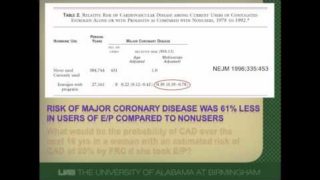Odds Ratio & Relative Risk Calculation & Definition, Probability & Odds
ERRATA: At about the 3:00 mark the slide says “10,00” when it is really supposed to say “10,000.” I added a pop up box to fix it. Thanks to Mehdi Hedjazi for pointing this typo out The terms odds and probability are used interchangeably in everyday life. However, in the setting of Biostats they are […]
Odds Ratio & Relative Risk Calculation & Definition, Probability & Odds
Other Videos You Might Like:
Subscribe
Login
0 Comments
Newest




